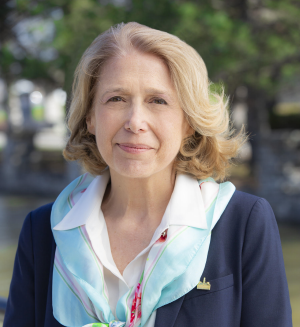An artful approach to governance
Although the decision to quit her artistic career was a painful one, Vodanovic has made peace with it.
“Now, my practice is the city!” she says of her current creative outlet.
To wit, Vodanovic describes her borough’s Eco-quartier Lachine-Est project as a canvas and its collaborative process — which includes stakeholders like Concordia’s Next-Generation Cities Institute (NGCI) — as a kind of performance art.
The completion of Eco-quartier Lachine-Est will involve the transformation of a 64-hectare brownfield into a mixed-use residential, commercial and recreational zone with improved access to public transportation. What’s more, Vodanovic hopes geothermal energy can be incorporated as a renewable source, to further enhance the neighbourhood’s sustainability.
The mayor attributes the project’s most recent momentum to Ursula Eicker, Canada Excellence Research Chair in Smart, Sustainable and Resilient Communities and Cities and founding co-director of the NGCI, and acknowledged the special partnership between Lachine and Concordia at a special event on campus in January.
“Concordia isn’t just about theory; they’re putting it into practice, bridging the gap between classroom learning and real-world experience,” says Vodanovic. “Ursula has people with her that have the practice and the know-how to make things happen.”
From brushes to ballots
The relationship between municipal politics and visual art may seem tenuous. But for Vodanovic, the notion that there could be an overlap between artist and politician was crystallized during her art history education. The discipline helped her develop a framework to appreciate the current political moment.
“When you study the history of art throughout the years, you have a sense of how other civilizations thought and worked,” says Vodanovic. “It’s an image of their culture, their rituals and their priorities. And through that, you gain a critical sense of understanding of the world.
“What we’re living through now, as a democracy, is an exceptional moment. It’s something we have to protect.”
Vodanovic also notes that these protections should extend to the environment, which is what inspired her to run for office in the first place. Prior to her involvement with politics, Vodanovic had volunteered extensively with children, using the arts to teach them to safeguard nature. Their projects particularly focused on water protections.
Today, Vodanovic oversees water management for the city of Montreal’s executive committee.
“I was actually asked by the previous mayor to join his team, because I created and ran this art and water project with the kids. I wanted to show the students that if you take action, then you can make a positive impact.”
For Vodanovic, the common thread between environmental action, politics and art is imagination. It’s an approach she says can empower us to find effective strategies to address contemporary problems.
“There is creativity in the search for solutions,” she says. “I hope we show that doing the right thing for the environment is a win-win situation. It’s good for developers, it’s good for the city. It makes us all richer and better as a society.
“People think they don’t have the power to make change. But we all have so much to offer.”


 Vodanovic describes her borough’s Eco-quartier Lachine-Est project as a canvas, and its collaborative process — which includes stakeholders like Concordia’s Next-Generation Cities Institute (NGCI) — as a kind of performance art. | Credit: City of Montreal
Vodanovic describes her borough’s Eco-quartier Lachine-Est project as a canvas, and its collaborative process — which includes stakeholders like Concordia’s Next-Generation Cities Institute (NGCI) — as a kind of performance art. | Credit: City of Montreal
 “There’s creativity in the search for solutions,” says Maja Vodanovic, BFA 94.
“There’s creativity in the search for solutions,” says Maja Vodanovic, BFA 94.